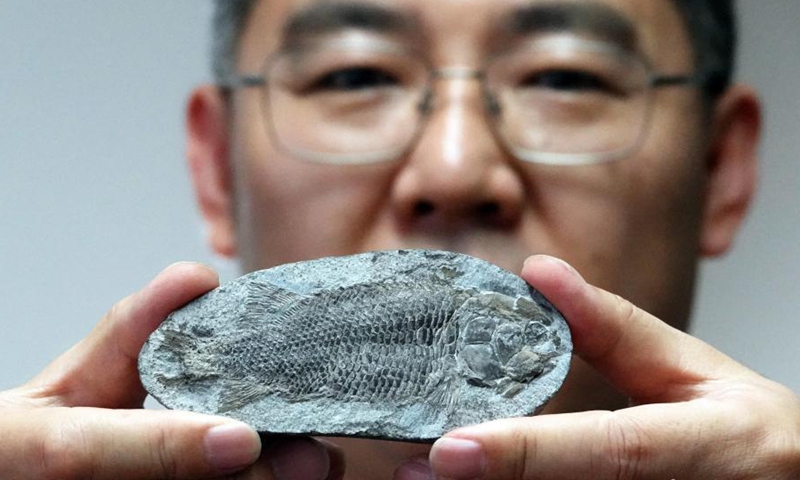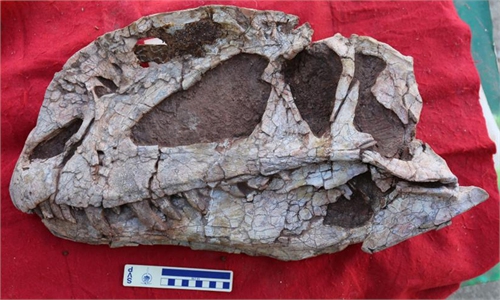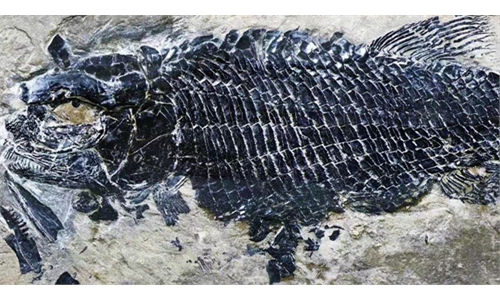ARTS / CULTURE & LEISURE
Chinese scientists discover new 249 million year-old fish genus

One fossil of the perleididae Photo: Chinanews.com
A new species of perleididae, an extinct genus of ray-finned fish from the Triassic period, was discovered in the limestone nodule strata dating back approximately 249 million years at the border of East China's Jiangsu and Anhui provinces, Chinanews.com reported on Sunday.
Xu Guanghui, a research fellow at the Institute of Vertebrate Paleontology and Paleoanthropology, Chinese Academy of Science, said that he and his team named it "Wu's Triassic Fish."
The standard length of Wu's Triassic Fish is 11 centimeters, which is a relatively small marine carnivorous fish, Xu said.
The research team uncovered six fossil specimens in total, four in Jiangsu and two in Anhui. All specimens were preserved in nodule form.
The significant findings from this study have been recently published online in the academic journal Vertebrata Palasiatica, which is a well-known and internationally distributed, professional vertebrate paleontology journal in Asia.
This discovery provides new insights into the early evolution and classification of perleididae fish, experts said.
In 2021, Xu and his team discovered a new large-scale ancient fish fossil in Luoping, Southwest China's Yunnan Province. The fossil was identified as a new species of the pteronisculus, ray-finned fishes, and is also the largest known backbone ray-finned fish predator in the Luoping biota dating back to 244 million years ago.



